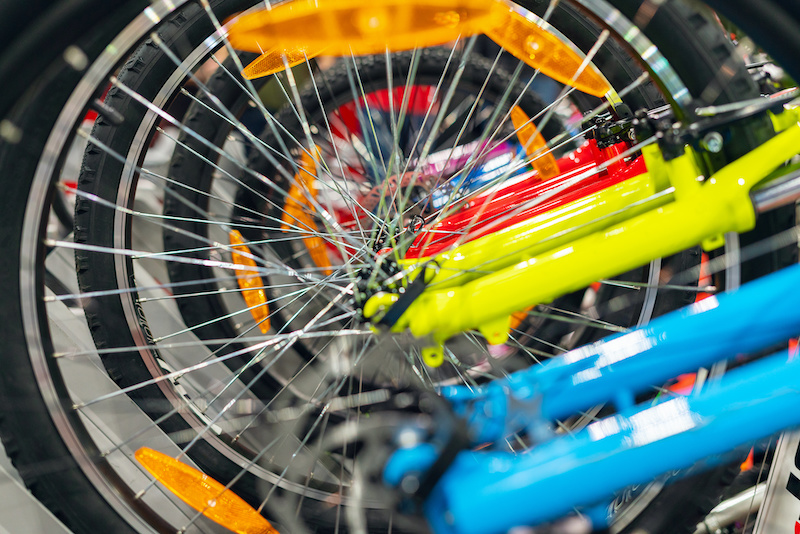
Choosing the Right Bike
Choosing the Right Bike.
Spring is here … well, in typically British style, of course! Avid cyclists amongst you are raring to get out there and maybe looking to upgrade your bike or try a different cycling style. Or maybe you’re looking to get started with cycling as a new hobby.
Choosing the right bike is an important decision as there are many factors to consider from your riding style, budget to fit and comfort. So here’s a quick guide to selecting your perfect bike.
-
Determine Your Riding Style …
...Or your next cycling challenge. There are several different types of bikes designed for specific riding styles. The main ones are:
- Road Bikes: Road bikes are designed for fast and efficient riding on paved roads. They feature lightweight frames, narrow tyres, and drop handlebars that allow for an aerodynamic riding position.
- Mountain Bikes: Mountain bikes are built for off-road adventures on rugged terrain. They feature wide tyres, suspension systems, and flat handlebars for better control on rough trails.
- Hybrid Bikes: Hybrid bikes are a versatile option that combine features of both road and mountain bikes. They feature wider tyres than road bikes for better stability, and flat handlebars for a more upright riding position.
- Commuter Bikes: Commuter bikes are designed for everyday use, with features like fenders, racks, and lights for commuting to work or running errands.
- Electric Bikes: Electric bikes, or e-bikes, are equipped with a battery-powered motor that provides pedal assistance to make cycling easier and more accessible.
-
Your Budget.
The good thing about cycling is there are many options out there that cater to every budget from budget-friendly to high-end and specialist models. The key to not getting carried away is to set a budget and try – yes, try – to stick to it.
Factors that affect pricing range from the quality of the components, the materials used in the frame, and the brand name. It's also worth considering the cost of accessories like helmets, locks, and lights as these can all start to quickly add up and bust your budget.
-
Comfort & Fit.
This is crucial for both safety and enjoyment. A bike that’s too big or too small can be uncomfortable, affect your balance, and even lead to injury. The key things to consider when your choosing the perfect 2-wheeled friend:
- Handlebar position: The handlebars should be at a comfortable height and distance from the saddle, allowing you to ride with a relaxed posture and minimize strain on your arms, shoulders, and back.
- Saddle shape and padding: The saddle should be comfortable and fit your ‘sit bones’, with enough padding to absorb shock and prevent chafing or pressure points.
- Frame geometry: The frame geometry should be appropriate for your riding style and body type, with a comfortable reach and stack height that doesn't strain your neck or lower back.
- Pedal position: The pedals should be positioned so that your feet are comfortable and stable, with the balls of your feet over the pedal axle.
- Suspension: Suspension can provide additional comfort and absorb shock, especially if you plan to ride on rough terrain or over long distances.
- Tyres: The tyres should be appropriate for the type of riding you plan to do, with a width and tread pattern that provides a comfortable ride and enough traction.
-
The Right Frame Material & Components.
Bike frames are typically made from one of four materials: aluminium, carbon fibre, steel, or titanium. Each material has its own advantages and disadvantages ...
Aluminium is a lightweight and affordable option, making it a popular choice for entry-level bikes.
Carbon fibre is even lighter than aluminium and offers greater stiffness and shock absorption but is more expensive.
Steel frames are durable and provide a comfortable ride, but can be on the heavy side.
Titanium is the most expensive option but offers a combination of being both lightweight and durable.
The components of a bike, such as the brakes, gears, and wheels, are also important factors to consider. The quality and type of components can affect the bike's performance and durability, as well as its price. If budget allows, then look for brands, such as Shimano, SRAM, and Campagnolo, that are known for producing quality components.
-
The Test Ride.
Once you've narrowed down your options, it's time to test ride different bikes. This is the best way to determine which bike feels the most comfortable and suits your riding style. Many bike shops offer test rides, so take advantage of this and try out several different models before making your final decision.
So there you have our list of ‘checks’ when you’re on the hunt to find your perfect cycling companion. Happy hunting ... and more importantly, happy cycling!
